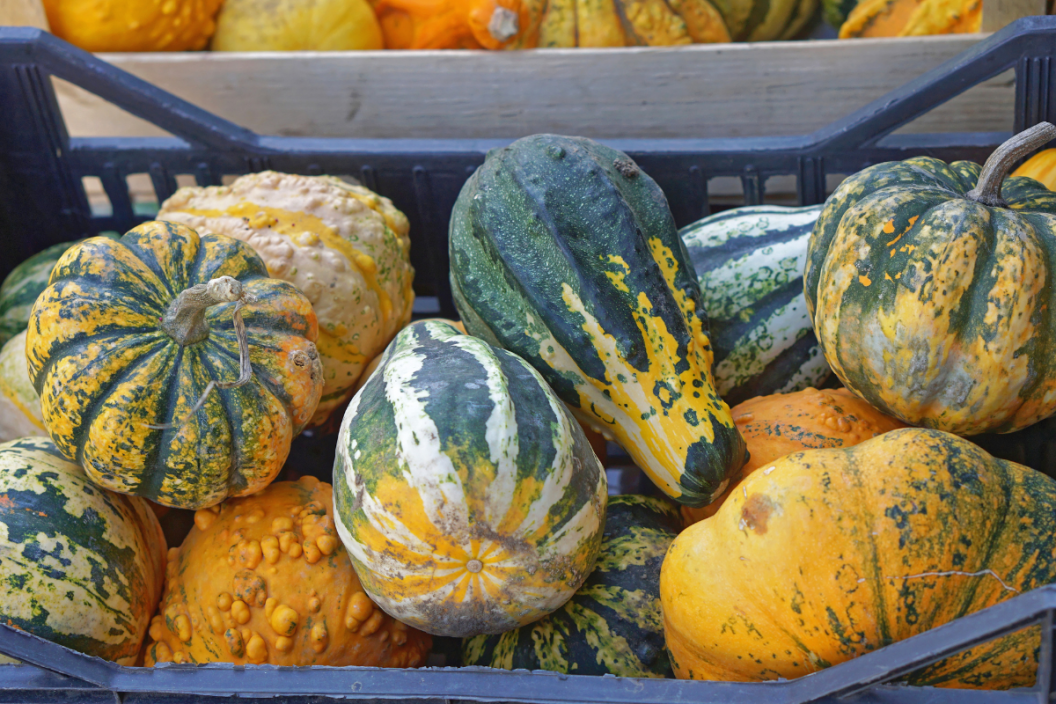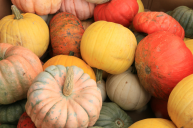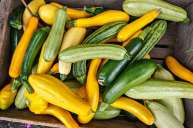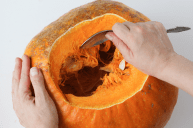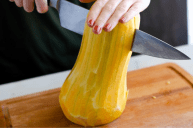Fall is here, and that means harvest time! The cornucopia of fall brings a heaping bounty of squash, pumpkins, and gourds. Pumpkin spice everything is popping up on menus while seasonal recipes focus on what you can stuff into an acorn squash. Smells of cinnamon and nutmeg waft your way as you pass by store windows decorated with gourds.
Videos by Wide Open Country
These three peculiar-looking members of the Cucurbitaceae family (Cucurbita) are everywhere you turn. Coming in an odd array of different shapes, colors, and sizes, they are hard to ignore. And despite their unique appearance, they sort of all look the same. So what's the difference?
What's the difference between gourds, squash, and pumpkins?
Squash
There is summer squash (like zucchini and pattypan), and then there is winter squash (hello, spaghetti squash, buttercup squash, and hubbard squash). Winter squash has thicker skin than its summer counterpart, making it ideal for storing through the long, cold winter months. It is harvested at the same time as its pumpkin and gourd friends, but unlike them, squash varieties are meant solely for eating.
Baked, boiled, steamed, roasted, pureed, sautéed, or pan-fried, squash can be prepared just about any way you dice it. The key is knowing when to peel, and when to skip it. Acorns and Delicata have thinner skin that is easy to eat. Blue Hubbard, on the other hand, has tough and inedible rind.
A word to the wise, make your life easier and use a sharp knife to slice off the peel. Peeling tough skin is a grueling task and nobody has time for that. If you insist on using a peeler, plop the squash in the microwave for a few minutes and grab your Y-peeler to get the job done. Some hard shells are tough to crack!
Pumpkins
Bright orange and perfect for carving, pumpkins are easy to distinguish. Right? Well, sort of. Pumpkins come in a variety of colors ranging from blue to tan. And to make matters a little more confusing, they are in fact considered a squash, but not all squash are considered a pumpkin. Got that?
While there is no botanical difference between a squash and a pumpkin, one thing is for certain, pumpkins make a better jack-o'-lantern for Halloween and we can't forget they contain pumpkin seeds which are perfect roasted. I mean, could you imagine trying to carve a face into a butternut squash? I think not. Getting down to the nitty-gritty, the real difference is that pumpkins are for decoration, as well as some good eating.
When you are picking out your pumpkins this fall, remember each type has its own specialty. If you are making pumpkin pie, Sugar pumpkins are best. Those mini-sized Jack Be Littles at the grocery store are perfect for table decorations or as a single serving pumpkin soup appetizer. And for carving, anything big like Big Rock pumpkins will do.
Gourds
Walk around a fall craft fair and you are sure to see some amazing gourd pieces. Hard-shelled, gourds have a long history of ornamental use, being turned into bowls, birdhouses, and musical instruments alike. Unlike squash and pumpkins, gourds are inedible and only used for decorating. But that's okay, we all like looking at cool things, anyway. It may only be for decorative purposes, but bottle gourds still look beautiful in a garden.
Ornamental Gourd Seeds
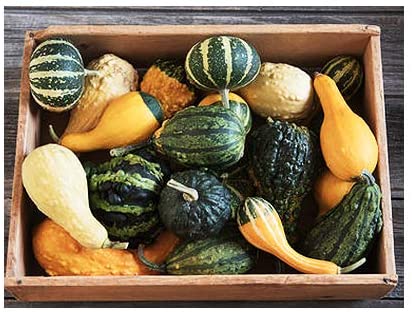
Amazon
Painted, carved, or crafted, decorative gourds have a cult following that shines during harvest season. They can be a rather difficult medium to work with, but skillful artists have turned these weird fruits into masterpieces. If you are interested in getting crafty this fall, grab a gourd and see where your inner artist takes you.
Products featured on Wide Open Eats are independently selected by our editors. However, when you buy something through our links, we may earn a commission.
